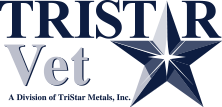Advocates tout the benefits of a raw food diet for dogs to optimize canine health. However, those in the commercial dog food camp argue that raw food diet risks outweigh potential rewards.
What is a Raw Food Diet?
The raw food diet is also known as BARF– for Bones and Raw Food or Biologically Appropriate Raw Food. While not the most attractive acronym, BARF spells out raw food diet basics. Feed dogs a diet consisting of uncooked meat, sometimes still on the bone.
There is no universal raw food formula. However, some dog owners may add vegetables, grains, eggs, fruit, yogurt, or other fresh dairy products to raw meat and bones.
Raw Food Diet Pros
Raw food is the way canines evolved to eat, according to proponents. It’s natural for dogs. BARF does not contain the preservatives, additives, or fillers found in manufactured dog food.
A BARF diet may result in a shinier, healthier coat, reflecting better health overall. Stools are smaller and firmer, as dogs absorb more nutrients. Owners report that their dogs are more energetic, with stronger bones and muscles. Maintaining the dog at a healthy weight is easier.
Of course, those who feed a raw diet know exactly what their pet is eating.
Raw Food Diet Cons
However, this practice has its critics. Feeding a raw food diet is more expensive than going the commercial dog food route. It’s also more time-consuming when dog owners prepare these meals themselves. However, frozen raw dog foods are available
On the other hand, a great deal of research has gone into commercial dog food production. Canned and dry dog food is nutritionally balanced. In addition, there are foods designed for puppies, adults, seniors, and dogs with special dietary needs. That’s not the case with raw food diets.
Dogs fed a BARF diet may end up with nutritional deficiencies. These may take weeks or months to become apparent, at which point the damage is done. However, raw meat and bones contain potentially harmful bacteria, such as E.coli. Parasites are also a concern.
Some bacteria may cause mild gastrointestinal ailments, such as diarrhea. These pathogens may even result in serious illness or death. For this reason, feeding a raw food diet to an immunocompromised dog may prove dangerous.
Further, if immunocompromised people are living in the household, they are at risk if exposed to the pathogens in raw dog food. In fact, they are at greater risk of developing an infection than the dog. Proper sanitation is a must when feeding a BARF diet.
The Bottom Line
If you are interested in going the raw route, speak to your veterinarian about whether that is a good option for your dog. Regular monitoring can ensure that any potential deficiencies are caught early.
Contact Us
Contact Tristar today for affordable, easy-to-clean commercial vet kennels, veterinary exam tables, and animal care products that are designed to last for the life of your business.

